The glass house on the Frick property has been part of the visitor experience since The Frick Pittsburgh opened to the public in 1990. We refer to it as a greenhouse, but when the Fricks lived here this building was called both “greenhouse” and “conservatory.”
Across Europe and the United States, at the height of the Gilded Age, domestic conservatories were luxury lifestyle statements for people of the Fricks’ social class. As in the case of the Frick family greenhouse, many were designed as elegant settings to grow and exhibit fragrant flowers, exotic palms and delicate orchids in abundance all year long. Others were designed as alluring supplemental living spaces for the “performance” of social interactions during an era bound by strict social rules, and are portrayed as such in the art and literature of the era.
Public conservatories developed during the 1870s and were truly democratic social realms that welcomed people of all classes. The Gilded Age was a “Golden Age” of conservatories around the world—including in smoky, industrial Pittsburgh—where they also represented successful social experiments.
PITTSBURGH CONSERVATORIES
Public
Pittsburgh originally had two public conservatories, both established by Henry Phipps, Jr., childhood friend of Andrew Carnegie and second largest shareholder in Carnegie Steel. In 1886, Phipps donated $25,000 to establish a glasshouse in his hometown of Allegheny City—today’s North Side.
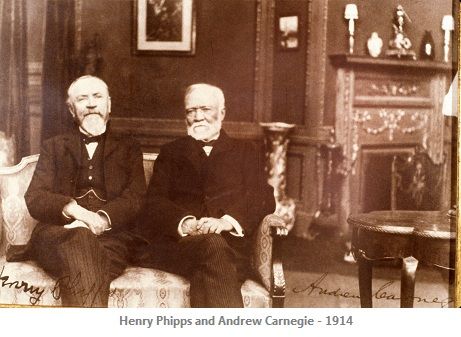
This first Phipps Conservatory became a very popular destination. It has undergone many iterations, and we know the site today as the National Aviary.
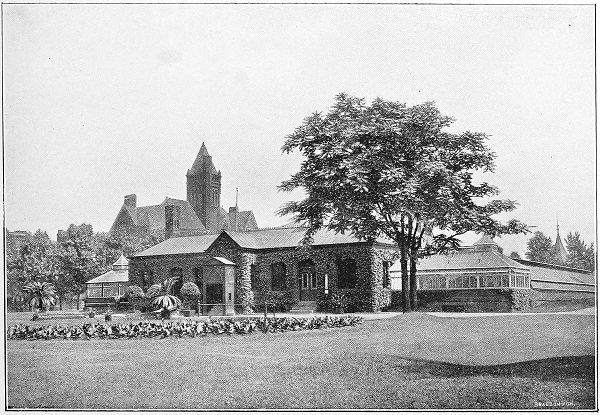
The 9-room Phipps Conservatory in Oakland’s Schenley Park opened in December 1893 as another gift from Henry Phipps, Jr. —this time to the City of Pittsburgh. It showcased many plants that had been on display at the 1893 World's Columbian Exposition in Chicago.
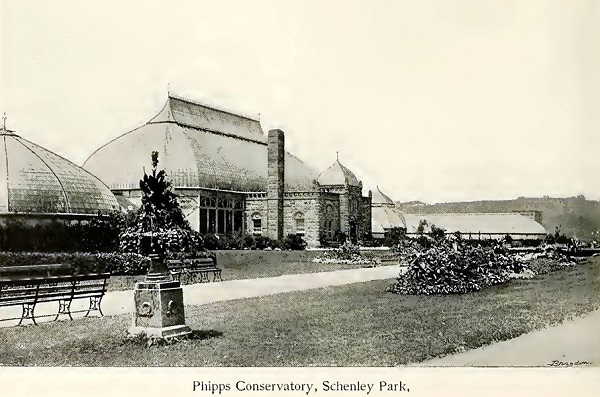
Pittsburgh was justly proud of her public conservatories, and for a time the Oakland building was the largest in the country. These Phipps conservatories were also laboratories for experiments in elite philanthropy, akin to the type espoused by Andrew Carnegie in his Gospel of Wealth. They exemplified the prevailing “City Beautiful” philosophy, which held that making urban centers beautiful with parks and conservatories would encourage refined human conduct. That was no small thing to aspire to during a time when Pittsburgh’s establishment felt their city was being transformed by an influx of coarse, uncultured immigrants. These crystal palaces were filled not only with plants and flowers but with a hope for socially transformative potential, just as Carnegie’s libraries and Oakland cultural center were.
Private
Pittsburgh’s wealthy industrialists may not have had a formal competition to outdo one another in constructing glass houses, but they certainly built a lot of them. Examples of Pittsburgh industrial elite with private conservatories include William Croghan, father of Mary Schenley, at his mansion in today’s Stanton Heights; HJ Heinz (1844–1919) and George Westinghouse at their Point Breeze estates; Alexander Rolland Peacock, Carnegie Steel partner (1861–1928) and oilman JJ Vandergrift (1827–1899) at their East End mansions; and Charles Schwab (1862–1939), then superintendent of Edgar Thompson Works, at his home in North Braddock.
The newspapers of the day praised the proliferation of these private grass houses as being illustrative of the region’s attempts to rise beyond its industrial reputation and to showcase the good taste of its industrial elite. Those elite philanthropists hoped that the cultural appreciation on display in their glass houses would have a “trickle down” effect to the region’s less erudite population. To that end, many of the private owners opened their conservatories for spring and fall flower shows, to which the public was invited free of charge.
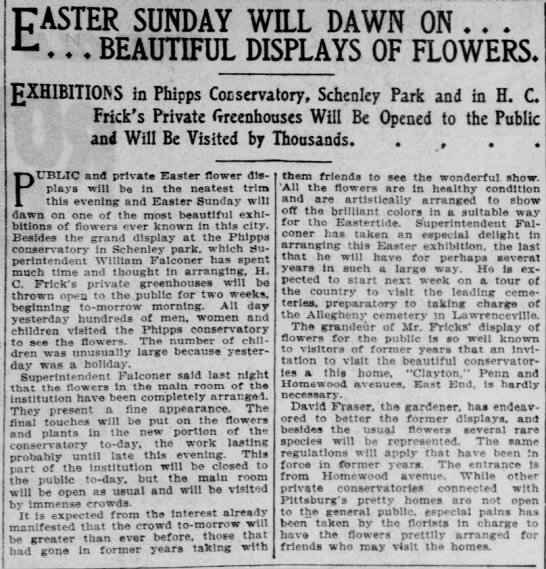
April 11, 1903 Daily Post
THE FRICK GREENHOUSE
The Frick Greenhouse was built in 1897 when Mr. Frick hired the Pittsburgh architectural firm of Alden & Harlow to add to his estate. It wasn’t the first such structure at Clayton, but this new one was meant to be a showpiece. According to the papers “no expense was spared” and it was described as " . . . one of the most modern public or private ones in the state of Pennsylvania, and possibly in the United States.” Alden & Harlow worked with Lord & Burnham, an American company renowned for its conservatory design. Among other efforts, The New York state-based Lord & Burnham created the Schenley Phipps buildings, worked on the Golden Gate Conservatory, and designed the conservatory at The New York Botanical Garden. Glass houses like the Frick building were often built of durable cypress or white pine, with structural elements of iron or steel.
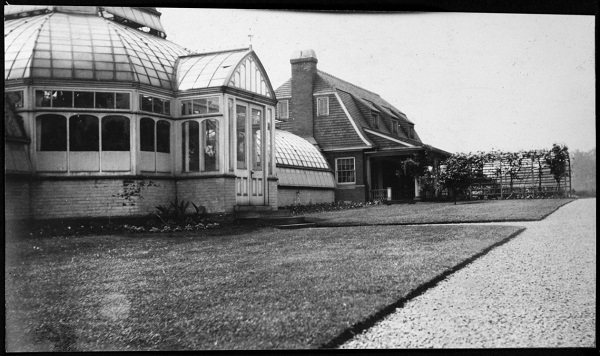
To oversee his new buildings, Mr. Frick hired a 31-year-old Scotsman named David Fraser. Mr. Fraser came highly recommended by his former colleague, Schenley Phipps Conservatory Superintendent and fellow-Scotsman William Falconer. According to Frick payroll records, David Fraser was paid $80 a month from 1901–1903. That’s roughly $2,000 today, making him one of the highest paid employees at Clayton.
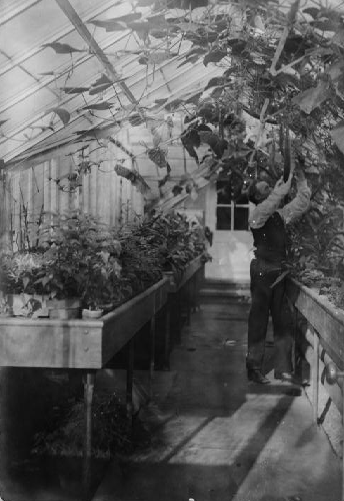
Newspaper society pages described how the Fricks had as many as 30 vases of cut flowers adorning their home on an average day, supplied by their own greenhouse. Fraser arranged décor for and supervised decorators for social occasions, such as daughter Helen Frick’s societal debut in 1908 and a garden party when son Childs Frick graduated from Princeton in 1905. The newspapers were filled with elaborate descriptions of the flowers on display at Clayton and Pittsburgh’s other private and public conservatories during the annual fall and spring public flower show seasons. The Frick greenhouse held its first public flower show in fall 1899 with countless chrysanthemums and roses on display.
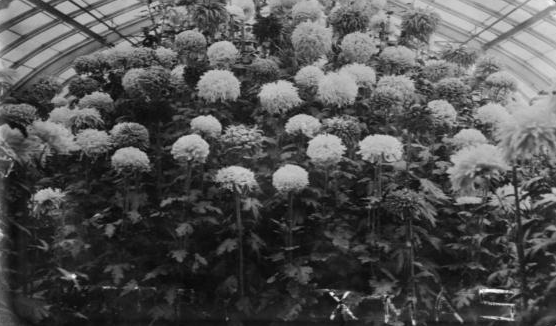
Fraser followed up the next spring with an Easter show of Bermuda lilies and orchids. During these shows the greenhouse would remain open for several weeks. Guests would enter from the Homewood Avenue gates and walk past cultivated rose gardens. Fraser also had a national reputation for his expertise in mushroom cultivation at the Frick greenhouse.
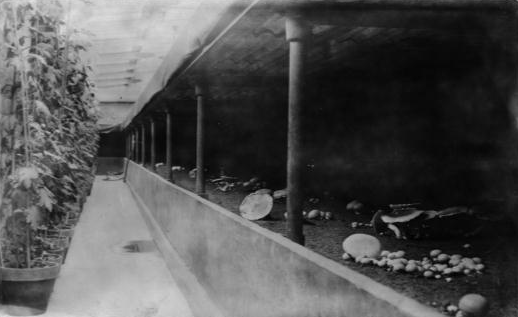
Following the family’s move to their new Manhattan home in 1914, Henry Clay Frick closed the Clayton greenhouse to the public. This corresponded with a general fading of fascination with conservatories that accompanied the uncertainty, austerity and brutality of the subsequent WWI years and Great Depression. The Frick greenhouse remained operational on a smaller scale throughout Helen Frick’s life, and the gardeners who worked there kept her Boston and New York homes supplied with fresh flowers. The building was renovated in preparation for the public opening of the Frick in 1990, and has been in operation ever since.
Archival images courtesy of The Frick Collection/ Frick Art Reference Library
Public conservatories developed during the 1870s and were truly democratic social realms that welcomed people of all classes. The Gilded Age was a “Golden Age” of conservatories around the world—including in smoky, industrial Pittsburgh—where they also represented successful social experiments.
PITTSBURGH CONSERVATORIES
Public
Pittsburgh originally had two public conservatories, both established by Henry Phipps, Jr., childhood friend of Andrew Carnegie and second largest shareholder in Carnegie Steel. In 1886, Phipps donated $25,000 to establish a glasshouse in his hometown of Allegheny City—today’s North Side.
This first Phipps Conservatory became a very popular destination. It has undergone many iterations, and we know the site today as the National Aviary.
The 9-room Phipps Conservatory in Oakland’s Schenley Park opened in December 1893 as another gift from Henry Phipps, Jr. —this time to the City of Pittsburgh. It showcased many plants that had been on display at the 1893 World's Columbian Exposition in Chicago.
Pittsburgh was justly proud of her public conservatories, and for a time the Oakland building was the largest in the country. These Phipps conservatories were also laboratories for experiments in elite philanthropy, akin to the type espoused by Andrew Carnegie in his Gospel of Wealth. They exemplified the prevailing “City Beautiful” philosophy, which held that making urban centers beautiful with parks and conservatories would encourage refined human conduct. That was no small thing to aspire to during a time when Pittsburgh’s establishment felt their city was being transformed by an influx of coarse, uncultured immigrants. These crystal palaces were filled not only with plants and flowers but with a hope for socially transformative potential, just as Carnegie’s libraries and Oakland cultural center were.
Private
Pittsburgh’s wealthy industrialists may not have had a formal competition to outdo one another in constructing glass houses, but they certainly built a lot of them. Examples of Pittsburgh industrial elite with private conservatories include William Croghan, father of Mary Schenley, at his mansion in today’s Stanton Heights; HJ Heinz (1844–1919) and George Westinghouse at their Point Breeze estates; Alexander Rolland Peacock, Carnegie Steel partner (1861–1928) and oilman JJ Vandergrift (1827–1899) at their East End mansions; and Charles Schwab (1862–1939), then superintendent of Edgar Thompson Works, at his home in North Braddock.
The newspapers of the day praised the proliferation of these private grass houses as being illustrative of the region’s attempts to rise beyond its industrial reputation and to showcase the good taste of its industrial elite. Those elite philanthropists hoped that the cultural appreciation on display in their glass houses would have a “trickle down” effect to the region’s less erudite population. To that end, many of the private owners opened their conservatories for spring and fall flower shows, to which the public was invited free of charge.
April 11, 1903 Daily Post
THE FRICK GREENHOUSE
The Frick Greenhouse was built in 1897 when Mr. Frick hired the Pittsburgh architectural firm of Alden & Harlow to add to his estate. It wasn’t the first such structure at Clayton, but this new one was meant to be a showpiece. According to the papers “no expense was spared” and it was described as " . . . one of the most modern public or private ones in the state of Pennsylvania, and possibly in the United States.” Alden & Harlow worked with Lord & Burnham, an American company renowned for its conservatory design. Among other efforts, The New York state-based Lord & Burnham created the Schenley Phipps buildings, worked on the Golden Gate Conservatory, and designed the conservatory at The New York Botanical Garden. Glass houses like the Frick building were often built of durable cypress or white pine, with structural elements of iron or steel.
To oversee his new buildings, Mr. Frick hired a 31-year-old Scotsman named David Fraser. Mr. Fraser came highly recommended by his former colleague, Schenley Phipps Conservatory Superintendent and fellow-Scotsman William Falconer. According to Frick payroll records, David Fraser was paid $80 a month from 1901–1903. That’s roughly $2,000 today, making him one of the highest paid employees at Clayton.
Newspaper society pages described how the Fricks had as many as 30 vases of cut flowers adorning their home on an average day, supplied by their own greenhouse. Fraser arranged décor for and supervised decorators for social occasions, such as daughter Helen Frick’s societal debut in 1908 and a garden party when son Childs Frick graduated from Princeton in 1905. The newspapers were filled with elaborate descriptions of the flowers on display at Clayton and Pittsburgh’s other private and public conservatories during the annual fall and spring public flower show seasons. The Frick greenhouse held its first public flower show in fall 1899 with countless chrysanthemums and roses on display.
Fraser followed up the next spring with an Easter show of Bermuda lilies and orchids. During these shows the greenhouse would remain open for several weeks. Guests would enter from the Homewood Avenue gates and walk past cultivated rose gardens. Fraser also had a national reputation for his expertise in mushroom cultivation at the Frick greenhouse.
Following the family’s move to their new Manhattan home in 1914, Henry Clay Frick closed the Clayton greenhouse to the public. This corresponded with a general fading of fascination with conservatories that accompanied the uncertainty, austerity and brutality of the subsequent WWI years and Great Depression. The Frick greenhouse remained operational on a smaller scale throughout Helen Frick’s life, and the gardeners who worked there kept her Boston and New York homes supplied with fresh flowers. The building was renovated in preparation for the public opening of the Frick in 1990, and has been in operation ever since.
Archival images courtesy of The Frick Collection/ Frick Art Reference Library

